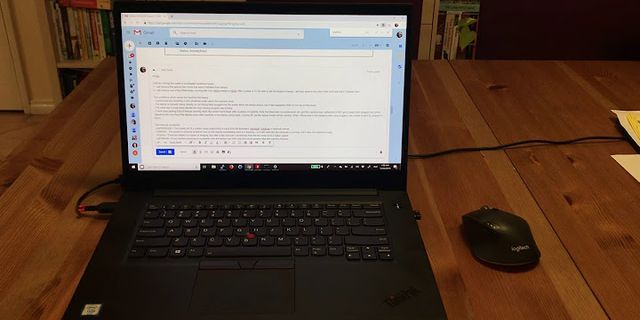 Agostino Mitelli, Italian, c.1700: “Sensory Hearing” (Picture 2 in a booklet of drawings about the senses.) Show
When couples come to us saying they have communication issues it is usually due to one or two of the following reasons:
Here we’ll describe a simple method we teach to our clients that addresses the third issue above, communication itself. If something is important enough to fight about this means it is important for the couple to work on. A healthy couple listens to their partner’s concerns. If it matters to one person then it is worth the time needed for the other person to understand. Simply put, in bad communication we spend most of our energy getting our point across, or defending ourselves. We don’t listen to the other person. And since we already know what we think, we are learning nothing. If the other person is upset it usually means we don’t really understand what is going on for them at a feeling level. Reflective Listening is about getting to the heart of the misunderstanding, and finding out (underneath this) what’s actually happening for the other person. In Reflective Listening done well we can have the uncanny feeling of suddenly coming to the position of a third person, of breaking through an impasse. The “argument” becomes dissolved because we’re no longer in it – we’ve dropped beneath it in a simple yet subtly powerful way. As one partner might say (in a relieved and positive voice) “I had no idea you we’re thinking that!” or “I had no idea and it makes me really sad to hear you felt that way”.
Willingness
This exercise can help build trust if used correctly. Ok, now we can startBecause it’s a conversation there’s a speaker and a listener. One chooses to speak first while the other listens. (Later, you’ll swap roles.)
 The Step-by-Step of Couple Reflective listening Swap RolesNow it’s time to swap roles. The speaker becomes the listener and the listener becomes the speaker. Once the second speaker is done, the first speaker may want to go again.The process continues in this open-ended way until both partners have completed what they wanted to say and both feel they have been listened to correctly (from the feedback they’ve received from the listener). Essentially, it’s checking in with ourselves, because we have the time to think about what is most important to say. We are really listening and giving time to understand each other more deeply. This process may take anything from 5 minutes or 30 minutes. What not to do
MasteryOnce you have mastered the skill of Reflective Listening then you can use it in daily interactions, as a single sentence (“So what I’m hearing you say is…”). Just check in when you are not sure you understand what is happening for your partner. Or you can ask your partner to reflect back what you have said, if you feel it is important and want to make sure they are not making assumptions or jumping to conclusions. Couples who take the effort to follow the steps of Reflective Listening carefully can be in for some positive surprises. They feel differently after the process. It may take some time and practice at the beginning but it is well worth the effort. Once a couple gets familiar with the practice and knows that talking is safe it can be used just to check that you really have understood what is happening for the other person. It ultimately saves a huge amount of time arguing and the pain of feeling misunderstood. Reflective listening is simple but takes practice. It is a way of showing that you want to resolve an issue and not just “have your say”.
Some couples struggle at the beginning to break their negative habits of interrupting, dismissing and rushing in to fix a problem with a practical solution – rather than staying with their partner while the real answer unfolds. But keep practicing! We are of course happy to help couples practice Reflective Listening, but you can also try this at home.
 Active Listening TipsBy: Couples Counseling Staff Active listening is one of those terms that we often hear but what does it really mean? According to experts in the field of communication, active listening means that you possess and have developed a specific kind of communication skill that allows you to fully hear what another person is trying to say. We know from experience as relationship counseling professionals that the ability for a couple to communicate in a meaningful way is vital to long term relational success. What follows are five keys to active listening for couples. Some of these tips may seem obvious while others will require you to pause and think. Read them all so that you can more fully absorb their deeper meaning. When you are done, reflect upon some of your past conversations with your mate and identify the areas that need improvement. This is a common homework assignment that we give couples here at the Center. Are you ready? Let’s jump right in!  1. Let your partner speakThis simply means that you should refrain from arguing your case until your partner finishes stating her or his position. Resist the urge to interrupt and cut off your mate mid-sentence. Finally, if you are aware that you historically take more time talking than your partner, this is a good sign that you need to talk less and encourage your significant other to talk more. 2. Put yourself in your partner’s shoesIf you are unmotivated to be a good listener, you are probably being sidetracked. During times of conflict, you should enter the conversation with specific goals of what you would like to learn from your mate – and not your talking points. Try to focus on your partner’s needs and feelings. This point also means allowing yourself to be in your partner’s shoes for a moment and trying to see a given situation from their viewpoint.  3. Don’t jump to conclusionsEven when folks are trying to listen, they sometimes assume that they know what their mate will say before the words can escape their mouth. If you do this – you need to make adjustments. Jumping to a conclusion means that you have entered the conversation with a pre-existing belief. One approach is to simply take a deep breath and clear your mind of any thoughts. You may need to do this several times in order to purge this mental material from your consciousness. 4. Ask questionsTo really understand where your mate is coming from, you should ask clarifying questions. Again – this means allowing your partner to speak first. Then, when there is a lull in the dialogue, feel free to ask something that you need clarification on. Avoid asking questions disguised as accusations. Instead, focus on knowledge that you truly need in order to better understand your partner’s position.  5. Paraphrase what your partner saysParaphrasing simply means confirming what you have heard through verbal summary. Communicate back to your mate the main points she/he has made objectively. Be aware there is a big difference between paraphrasing and parroting. In other words, don’t engage in a verbatim account or take on a litigious tone. A good way to do this is to preface a paraphrase with a question. Example: It sounds like my having to work overtime last night really made you mad? Summing Things UpOne of the main reasons couples find themselves in therapy can be traced to a breakdown in communications. When left unchecked, these breakdowns can cause a rift and lead to a relational collapse. Some couples find it useful to engage in meaningful conversation because it always seems to turn into a “fight”. If this is happening in your situation, we recommend you examine our suggestions for fair fighting. One resource you might want to think about if you are looking to improve your communication skills is The Lost Art of Listening by Dr. Michael P. Nichols. Inside, you will find practical tips and insight about how you and your partner can stop the cycle of constant bickering and fighting.Nichol’s book also does a good job of providing examples and techniques to move past communications hurdles and create greater intimacy in the relationship. Some couples find it helpful to work with a relationship counselor as a way of finding new approaches to dialogue. Depending upon the dynamics, one on one counseling with a therapist can also be helpful. If you live in Chicago and want to know more about our relationship counseling services, be sure to stop by our services page. We hope you found the suggestions made here useful. Please be sure to like Couples Counseling Center on Facebook, Circle Us on Google Plus and Pin on Pinterest!
|




















